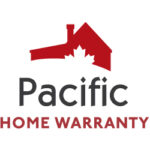The 2-5-10 warranty coverage refers to the number of years before the coverage of certain construction defects expires. There are very specific defects and issues covered under each stage of the warranty, and if something covered within two years of the start of the policy occurs in year 4, you’re on your own financially to cover that repair. Of course, that’s why home insurance exists – to help you cover home damage rather than pay the full amount out of your own pocket once your warranty expires. Many home insurance policies will exceed the minimum requirements of the 2-5-10 mandatory coverage, so make sure you know your limits before starting a claim.
This warranty applies to newly constructed homes only since the warranty covers materials and labor of the home rather than outside sources of damage. Whether you build new yourself or purchase a newly built home (constructed within the last 10 years), the warranty program applies to you. The warranty becomes active upon occupancy permit, transfer of ownership, or occupancy depending on which comes first.
The 2-5-10 warranty program was enacted in BC on July 1st, 1999 after the 1990’s leaky condo crisis in Vancouver. The mandatory warranty program is a solution to the previously inadequate insurance and builder liability statuses that failed homeowners affected by this crisis. Its main purpose is to hold builders, developers, and contractors accountable for the quality of the homes they build. They are also held accountable for the materials they use to build your home, so you’re protected on two fronts by this warranty program.
What is Covered Under the 2-5-10 Home Warranty?
At 2 years less a day, the warranty offers defects and failures regarding materials and labor including plumbing, heating, air conditioning, ventilation, and electrical systems. Violations of building code as well as defects which render the house unfit to live in are also covered for 2 years. Within this coverage period, there are a few extra provisions. At 12 months less a day, detached homes are covered inside and out, including Strata Unit Interior Areas. This refers to all appliances, finishes, flooring, hardware, and even paint. At 15 months less a day, only Strata common areas are covered under the warranty.
At 5 years less a day, the warranty covers building defects such as water leakage, foundation damage, basement defects, roofing, and exterior walls, doors, and windows and any other aspects of your building envelope – that is to say, everything that separates you from the elements.
At 10 years less a day, the warranty only covers major structural defects like a sinking footing or a collapse in some part of your home.
What Isn’t Covered by the 2-5-10 home warranty?
- Septic systems
- Landscaping
- Site drainage
- Other buildings on the property including sheds or detached garages
- Any materials or labour from the owner
- Municipal services
- Forces of nature
- Shrinkage of construction materials
- Animal damage
- Normal wear and tear
- Water quality
- Commercial use areas
- Roads, curbs, sidewalks
*Your home also won’t be covered if being used for non-residential purposes or if you fail to prevent or minimize damage to the home.
How Does the Warranty Work? Who Administers It?
BC Housing administers and oversees the program and is responsible for creating the warranty guidelines and rules of administering those guidelines. They are not responsible for getting involved in warranty claims nor do they write insurance policies or provide actual warranties. The builders themselves are responsible for purchasing new home warranty insurance policies through an insurance company, and it is your responsibility as a homeowner to obtain and keep a copy of your warranty policy.
If you have to make a claim within your warranty period, you must report the defect in writing to the builder responsible for the work as well as the insurance company who provides the warranty. Make sure to take as many pictures as you can of the area in question and be detailed in your report of the issue. The insurance company will then investigate your claim and will make a decision. Your report should include
- A cover letter which states the civic address, the warranty certificate number, strata plan number, and a list of the identified defects and damage
- A copy of the warranty certificate
- An inspection report if you have one
- Any prior correspondence between yourself, the builder, and the warranty provider related to the found defects
BC Housing’s online registry will give you the builder’s mailing address, but you can also find the builder’s and warranty provider’s addresses via corporate registry search through an agent.
To get the most benefit out of your warranty coverage, we recommend hiring a home inspector to conduct a thorough search of the home to point out any problem areas a few months before each coverage period ends so that you can take full advantage of the coverage while you have it. It would be incredibly frustrating to discover an issue a few weeks or months after the coverage expired, so it is in your best interest to be proactive regarding inspections to find hidden defects.
Which Homes are Exempt from The 2-5-10 Home Warranty?
There are a few circumstances under which your home does not qualify for the 2-5-10 home warranty. These types of homes are all exempt:
- Homes built by owner builders
- Manufactured homes such as factory built-ins and mobile homes that have not been significantly modified or added onto a site
- Non-stratified motels, dormitories, hotels, care facilities, and floating homes
- Social housing
- Multi-unit rental buildings in which the sale of a single unit is restricted by 10-year covenant
Final Note
While all of this information regarding your 2-5-10 warranty is great to know, most builders must meet certain requirements to be certified and licensed to build homes. A quality builder will take great pride in their work and will have total faith in the materials and labour processes used, so you may never have to think about your 2-5-10 warranty again. But just in case something goes wrong, you’re now equipped with all of the necessary knowledge. So, the next time you hear someone pose the question, “what is a 2-5-10 home warranty?” you can impress them with your vast knowledge of this mandatory coverage.





